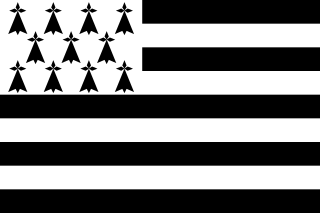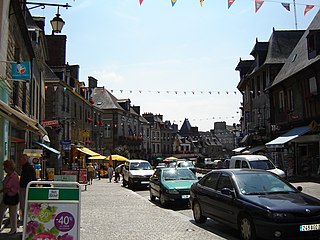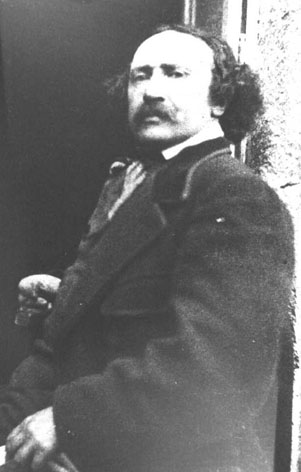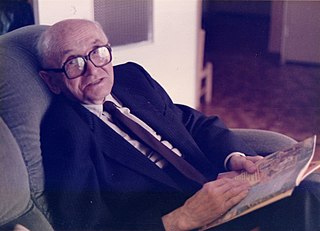Works
His writings, devoted to Breton hagiographic and historical subjects, were very popular. He is best known for his Lives of the Saints of Armorican Brittany , published in 1637 in Nantes by Pierre Doriou, and for which he notably used ancient manuscripts no longer extant.
This first Breton hagiographical work includes 78 lives of saints, 3 stories and 9 episcopal catalogs, one for each of the historical Breton dioceses (Saint-Pol-de-Léon, Quimper, Tréguier, Saint-Brieuc, Vannes, Saint-Malo, Nantes, Dol-de-Bretagne and Rennes).
The work was expanded and republished under the auspices of Guy Autret of Missirien (Rennes, Jean Vatar, 1659), who had collaborated with the Dominican, in 1680. Daniel-Louis Miorcec de Kerdanet offered a new edition, without the episcopal catalogs, in 1837 (P. Anner in Brest).
The standard edition remains that of the "Three Canons", published in 1901 (J. Salaün, Quimper) by Alexandre-Marie Thomas, Jean-Marie Abgrall and Paul Peyron.
Albert Le Grand also published in 1640 the Providence of God on the Righteous in the Admirable History of St. Budoc Archbishop of Dol in J. Durand in Rennes. This life of saint Budoc has been integrated into the successive reissues of the Lives of the Saints of the Armorican Brittany (with the modified title since its second reissue in 1680 as Lives of the Saints of Armorican Brittany).

Brittany is a peninsula, historical country and cultural area in the north-west of modern France, covering the western part of what was known as Armorica during the period of Roman occupation. It became an independent kingdom and then a duchy before being united with the Kingdom of France in 1532 as a province governed as a separate nation under the crown.

The flag of Brittany, a region in the northwest of France, is called the Gwenn-ha-du, pronounced [ɡwɛnaˈdyː], which means white and black, in Breton. The flag was designed in 1923 by Morvan Marchal. It is also unofficially used in the department of Loire-Atlantique, although this now belongs to the Pays de la Loire and not to the region of Brittany, as the territory of Loire-Atlantique is historically part of the province of Brittany. Nantes, its prefecture, was once one of the two capital cities of Brittany.
Bernard Le Nail was a French writer and Breton militant. After studying commerce in Paris, he headed the promotional office of the Chamber of Commerce and Industry in Nantes. In 1979 he became Secretary General of the Comité d'Etude et de Liaison des Intérêts Bretons (CELIB) at Lanester. Between 1983 and 2000 he was director of the Cultural Institute of Brittany and had an important role in the conception and publication of the collection Les Bretons au-delà des mers : Explorateurs et grands voyageurs. He was also involved in the conception and publication of the following works: 500 Bretons à connaître, revising the Guide Bleu Bretagne, Guides Gallimard Bretagne, Les noms qui ont fait l’histoire de Bretagne, Dictionnaire des femmes en Bretagne, La Bretagne entre Armor et Argoat.

Dol-de-Bretagne, cited in most historical records under its Breton name of Dol, is a commune in the Ille-et-Vilaine département in Brittany in northwestern France.
Tro Breizh is a Catholic pilgrimage that links the towns of the seven founding saints of Brittany. These seven saints were Celtic monks from Britain from around the 5th or 6th century who brought Christianity to Armorica and founded its first bishoprics.

The Bretons are a Celtic ethnic group native to Brittany. They trace much of their heritage to groups of Brittonic speakers who emigrated from southwestern Great Britain, particularly Cornwall and Devon, mostly during the Anglo-Saxon settlement of Britain. They migrated in waves from the 3rd to 9th century into Armorica, which was subsequently named Brittany after them.

Loïc Gwenc'hlan Le Scouëzec was a Breton medical doctor, writer, and Grand Druid of Brittany.

François-Marie Luzel, often known by his Breton name Fañch an Uhel, was a French folklorist and Breton-language poet.

Anatole le Braz, the "Bard of Brittany", was a Breton poet, folklore collector and translator. He was highly regarded amongst both European and American scholars, and known for his warmth and charm.

Dol-de-Bretagne Cathedral is a Roman Catholic church located in Dol-de-Bretagne. The cathedral is dedicated to Saint Samson, one of the founding saints of Brittany. It was formerly the seat of the Archbishop of Dol, one of the nine ancient bishoprics of Brittany. The cathedral suffered badly from the excesses of the French Revolution, becoming successively a "Temple de la Raison", then a stable, then a warehouse. Revolutionaries caused considerable damage and many treasures were lost. When it eventually returned to being a house of worship, its role as a bishopric was abolished by the Concordat of 1801 when the Dol diocese was merged into the Dioceses of Rennes and Saint-Malo. The Concordat of 1801 was an agreement between Napoleon and Pope Pius VII, signed on 15 July 1801 in Paris, which sought national reconciliation between revolutionaries and Catholics. The Concordat was abrogated by the law of 1905 on the separation of church and state.

The Breton and French Catholic diocese of Dol existed from 848 to the French Revolution. It was suppressed by the Concordat of 1801. Its see was Dol Cathedral. Its scattered territory was shared mainly by the Diocese of Rennes and the Diocese of Saint-Brieuc.

Arthur Le Moyne de La Borderie, was a Breton historian, regarded as a father of Brittany's historiography.

Jean Malo-Renault was a French librarian. Malo-Renault was born in Paris on 9 June 1900 into a family originating from Saint-Malo. He was the son of the pastellist, engraver and illustrator, Émile Malo-Renault, real name Émile Auguste Renault, and his wife Honorine Césarine Tian, herself a printmaker, etching in color.

Pierre Le Baud or Lebaud was a French clergyman and historian known for his writings on the history of Brittany.

According to late traditions, Saint Clair was the first bishop of Nantes, France in the late 3rd century.
The Order of the Ermine was originally a chivalric order of the 14th and 15th centuries in the Duchy of Brittany. The ermine is the emblem of Brittany. In the 20th century, it was revived by the Cultural Institute of Brittany as an honor for those contributing to Breton culture. It was created in 1972 to honor those who contribute to Breton culture and development. At its head is a Chancellor and two vice-chancellors: Riwanon Kervella and André Lavanant. The siege is at the Institut Culturel de Bretagne, the castle of the Ermine, Vannes.

Saint Goulven de Léon was a saint in Brittany in the 6th-7th century. Any knowledge of his life is derived from his vita, of which only a copy of a transcription of the original remains and whose historical accuracy is in question. According to that vita, he was the bishop of Saint-Pol-de-Léon in the seventh century, after having acquired a reputation as an ascetic and anchorite whose prayer and presence cured people and had helped fight off a Viking invasion. When he was elected as bishop, he tried to avoid that responsibility by going to Rome; after intervention by Pope Gregory I he returned and served for over a decade. He died in Rennes, where he was buried in the cathedral. He continued to be venerated in various parts of Brittany, most notably in the small commune of Goulven and other communes nearby in the Pays de Léon, the very western part of Finistère.

France Bleu Breizh Izel - also known as France Bleu Lower Brittany, is a public service generalist radio station located in Lower Brittany, where Breton is traditionally spoken. The broadcast network and by extension Lower Brittany is made up of Finistère, western Côtes-d'Armor and western Morbihan. It was established on August 3, 1982, under the name Radio Bretagne Ouest.














